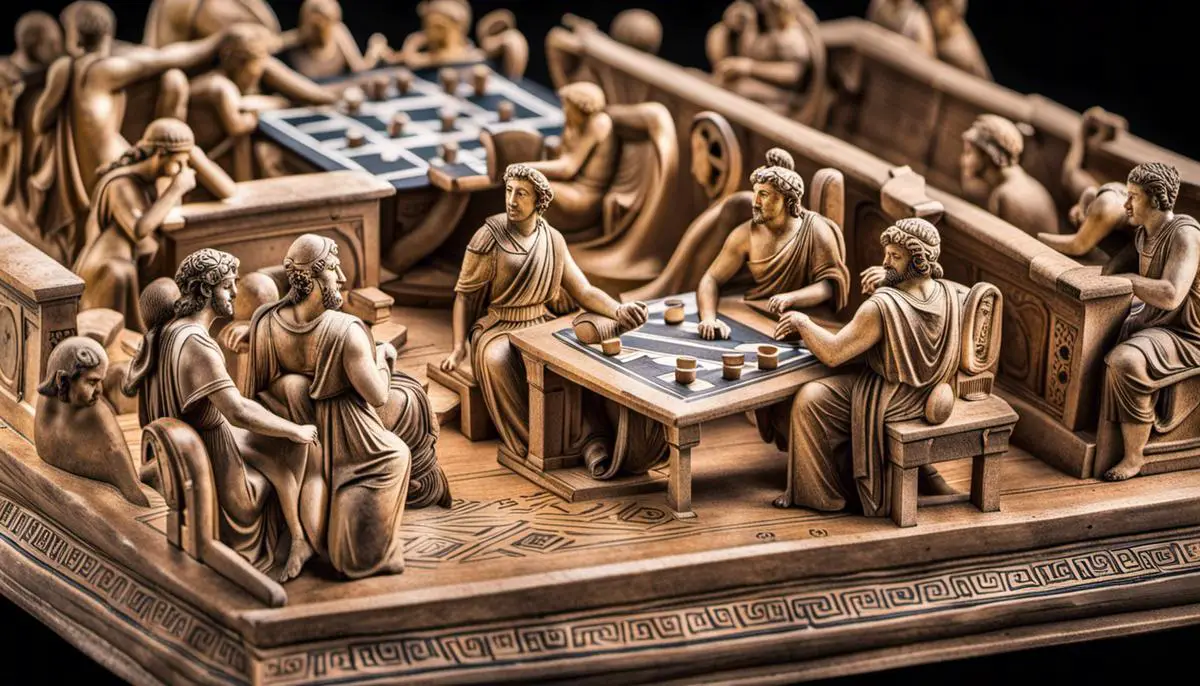From the thrumming social hubs of ancient Greece to the cozy corners of present-day gaming communities, Petteia, a classic game, has endured the test of time. It continues to intrigue enthusiasts and hobbyists with its tactical depth and rich cultural resonance. Our essay delves into various aspects of this fascinating game, tracing its journey through history to its current form. We scrutinize the board, pieces, rules, regulations, and strategies that define and distinguish Petteia, painting a comprehensive picture of a game that remains as relevant today as it was millennia ago. Furthermore, we forge connections with other similar board games, shedding light on the delicate interplay between games as a reflection of shared human ingenuity, creative expression, and competitive spirit.
History of Petteia
Origins and Significance in Ancient Greece
Petteia, also known as Polis or the game of the city, is an ancient board game believed to have originated in Greece as early as the 5th century BCE. Its roots trace back to the city-states of Athens and Sparta, reflecting the strategic military nature of these societies. The game, which involves a battle of wits between two players, was often used by military leaders to train in strategic thinking and decision making.
Archaeological and Written Records
Archaeological evidence of Petteia includes pottery fragments showing two players engaged in the game and small clay pieces believed to be game tokens. Additionally, historical references in the writings of prominent Greek figures, such as Plato and Homer, suggest the game’s widespread popularity. Homer’s reference in “The Odyssey” describes an early version of the game that involved large numbers of pebbles and squares, while Plato’s “Phaedrus” uses the game as a metaphor for strategic decision-making.
Rules and Gameplay
Petteia comprises a playing board divided into squares and a set of two groups of pieces, one for each player. The pieces would usually be placed on the board’s intersection points, a set-up similar to many modern games like chess. The actual rules of Petteia, however, are not definitively known due to the absence of detailed written texts. According to some interpretations, each player’s goal is to block the opponent’s pieces in such a way that they cannot make any legal move—a condition referred to as ‘sieve’.
Cultural Importance
The cultural significance of Petteia stretches far beyond its role as a recreational activity in ancient Greece. As a simulator of warfare strategy, it served a practical purpose for military training, and its metaphoric use in philosophical texts demonstrates its role in intellectual discourse. Petteia was also an important social activity, often played in symposiums and public squares, which underscores its role in Greek society’s public life.
The Evolution of Petteia
Although the emergence and popularity of dynamic board games like dice and card games have caused Petteia’s renown to fade, its influence remains evident. The design and objectives of many contemporary strategic board games, including chess and checkers, have been heavily influenced by Petteia. The grid board layout and the aim of capturing the opponent’s pieces are common elements in these games. Petteia is therefore a pioneer in the realm of strategic board games, its foundation continuing to shape the quality of games played today.
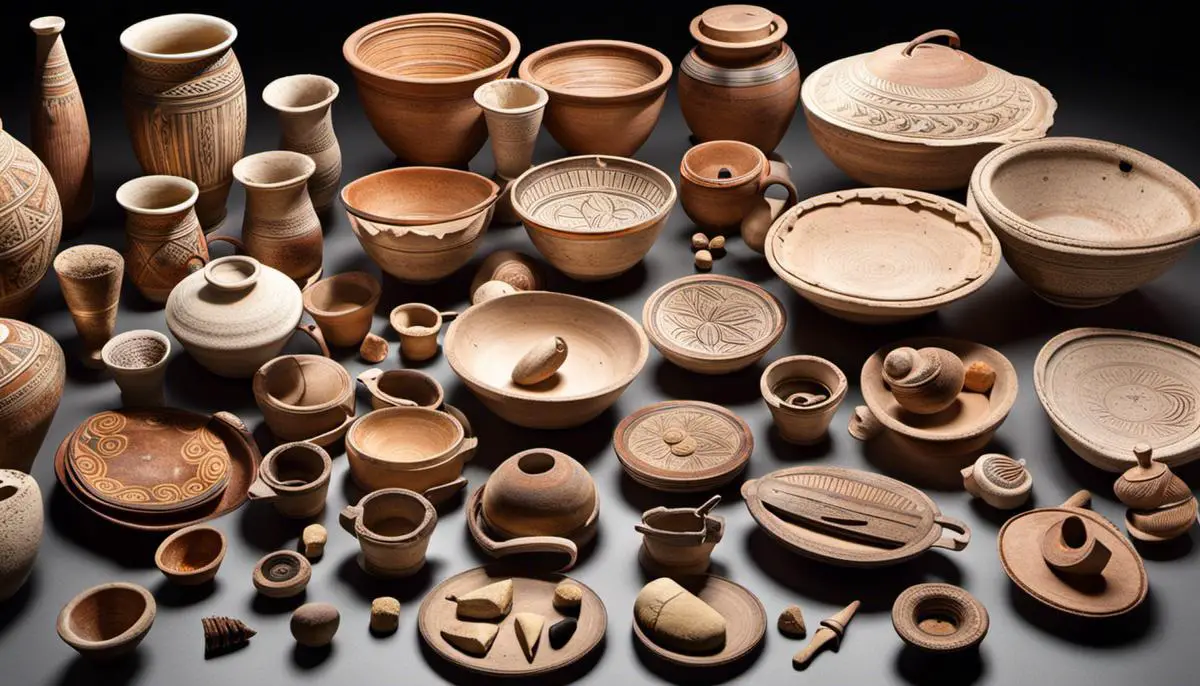
Understanding the Game Board and Pieces
Exploring the Game Board and Pieces of Petteia
Petteia, often referred to as “the game of the Greeks,” is an age-old board game that was once prevalent across the Mediterranean region. A classic Petteia board is typically an 8×8 square grid, much like modern chess or draughts boards. However, historical evidence reveals that not all Petteia boards adhered to an 8×8 format. Some variations from distinct eras or regions contain 5×5, 6×6, or even 7×7 squares, reflecting the game’s versatility and geographical adaptability.
The game boards were created from a variety of materials, encompassing stone, wood, and in some cases, simply drawn in dirt. The pieces, known as “pessoi,” were usually crafted from clay, stones or glass. The pieces typically came in contrasting colors – commonly black and white, to distinguish between the two opposing players.
The game holds cultural weight, with some symbolism associated with the game pieces. However, the distinct colors have no thematic significance but serve as visual separations. Petteia portrays a battlefield, with each game piece symbolizing a warrior. The game demands strategy over luck. The rules concerning movement, capture, and victory may be simple, yet they encourage profound strategic planning and foresight.
Petteia’s Global Presence
Petteia has made its mark in history across various cultures, not just in Greece. This timeless strategic board game has been discovered amidst the ruins and artifacts in places like Rome, Egypt, and the Near East. This intercultural presence has given rise to different versions of the game in terms of design, material, and size.
Rome’s version of Petteia was known as Latrunculi or the robbers game, where the board was generally larger, crafted into an extended 12×8 rectangular grid, as compared to Petteia’s traditional square board. The Latrunculi pieces were also distinguished in their shape and material, often being taller and rounder, typically made from bone or glass.
Despite these regional and temporal differences, the basic rules of Petteia succeeded in remaining remarkably consistent across the board. This attest to the game’s enduring popularity and universal appeal.
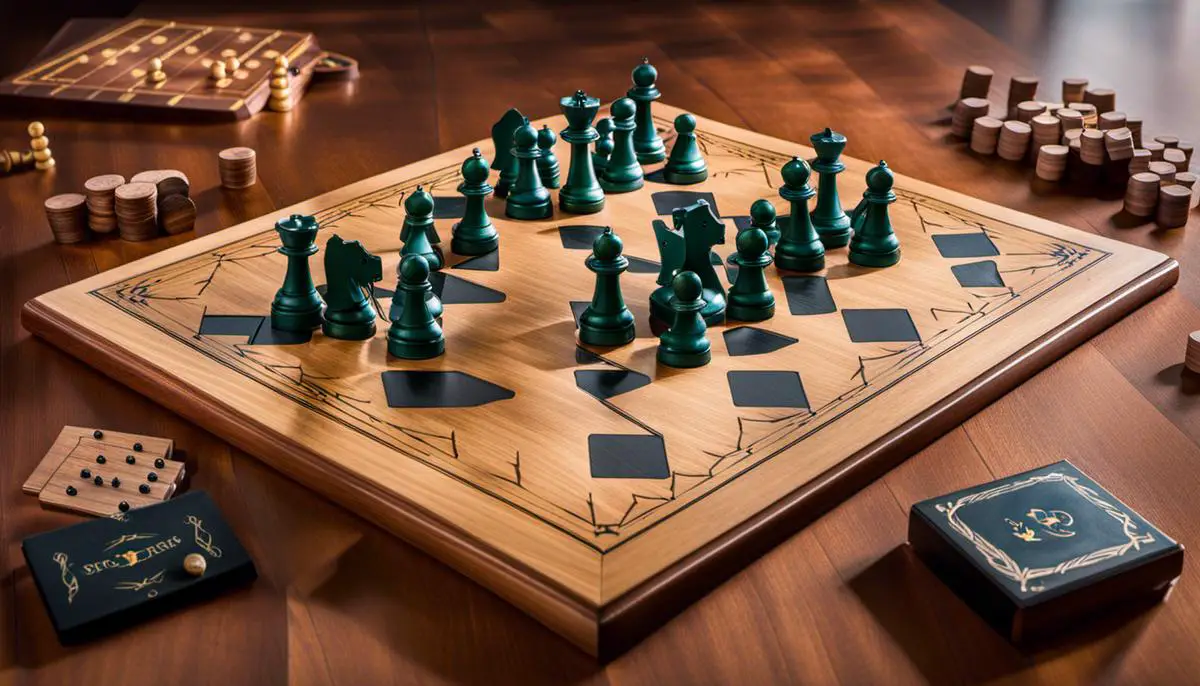
Rules and Regulations of Petteia
Learning the Fundamentals of Petteia
Petteia had held generations of ancient Greeks captivated, known to them also as Polis, or the City Game. This game is seen as the precursor to draughts or checkers. Petteia was structured around a grid patterned board, much like chess or checkers. Initially, the board contained 5×5 squares, but as the game evolved, so did the board – to an 8×8 grid.Beginning the Gameplay of Petteia
Players begin the game with an equal number of pieces, which are placed on every other square of the back two rows. The Petteia board is often divided into two sections, each belonging to one player. Depending on the version, each player may have between 12 to 15 pieces.Movement of Pieces in Petteia
The pieces move any number of squares horizontally or vertically, never diagonally. Unlike modern draughts, however, there are no “kings,” and when a piece reaches the far side of the board, it simply continues to move within the game area. The players continue alternating turns, moving one piece at a time.Capturing the Opponent’s Pieces
In Petteia, you can capture an opponent’s piece by sandwiching it between two of your own, either horizontally or vertically. This method of capture is known as custodial capture or intervention and forms the core principle of gameplay. The captured piece is then removed from the board. Interestingly, a player could tactically move his piece between two of the opponent’s pieces without being captured.Achieving the Win Condition in Petteia
The game is won when one player either corners the opponent’s king and takes all of the opponent’s pieces out of play or blocks the opponent so they cannot make a legal move. The game can also be won if the opponent is reduced to just one piece remaining on the board or the opponent’s pieces are all blocked.Historical and Geographical Variations
There is a degree of variation based on historical or geographical context. Historical pieces of evidence suggest that the Romans also adopted the game and called it “Ludus Latrunculorum.” The Roman variant involved using different types of pieces, with one acting as a ‘dux’ or a leader.It must be noted that despite the almost 2000 years of historical records for Petteia, the presented rules are somewhat conjectural based on the evidence that is available. Key details about the exact rules and strategies remain a matter of academic and amateur speculation.
Embarking on the Journey of Petteia
Exploring the game of Petteia is embarking on an exciting journey that melds strategic thinking and rich ancient history. The joy of playing Petteia lies not only in the challenge of outwitting your opponent but also in the discovery of a game that was once a popular pastime of ancient civilizations. Despite not having a detailed narrative of all its rules, the known ones provide a fascinating glimpse into the board game culture of eras long past.
Tactics and Strategies for Winning Petteia
Getting to Know the Rules of Petteia
Going by the name ‘Game of the Greeks’, Petteia was a favored board game in ancient Greece and Rome that accentuated strategic acumen. The game involves two players, each starting out with an equal number of pieces positioned on opposite ends of a square grid. The vitality of the game lies in the strategy to trap or ‘sandwich’ the opponent’s pieces between your own. Each turn allows a player to move a single piece in any direction: be it horizontal, vertical or diagonal. The finale of the game unfolds when a player runs out of valid moves, indicating their pieces have been successfully trapped.
Tactics and Strategies in Petteia
While moving in all directions gives players a high degree of flexibility, strategic placement is key to success in Petteia. Defensive tactics, such as arranging your pieces in formations that prevent your opponent from sandwiching you, are a common approach. Formations like a diagonal or a square formation can block opponents from trapping your pieces.
However, simply defending will not secure victory. Players must use offensive tactics as well by positioning their pieces in such a way that they can trap their opponent’s pieces between two of their own. One can lay traps by moving pieces into attacking positions while also being mindful not to leave their pieces susceptible to capture.
To create an offensive advantage, you can strategically position your pieces in a way that force your opponent to move their pieces into vulnerable positions.
Anticipating Opponent’s Moves in Petteia
While making your moves, it’s crucial to anticipate what your opponent might do next. Think about what you would do in their position: where would you move to capture your pieces? Which structure would you form to prevent your pieces from being captured? By anticipating your opponent’s moves, you can not only protect your pieces but also plan your next move to trap their pieces.
Reacting to Game Situations in Petteia
In Petteia, reacting to game situations means adapting your strategy based on the state of the game board. If most of your pieces are threatened by your opponent’s formations, it may be wise to adopt a more defensive strategy and regroup. Conversely, if you have the upper hand, concentrate on isolating and trapping your opponent’s pieces. This balance between offense and defense is a key element to mastering Petteia.
Petteia Gameplay Strategies
Consider the different strategies that can be applied during a game of Petteia. In the initial stages of the game with all pieces on the board, the main objective should be to establish well-positioned formations and seize any available opportunities to capture your rival’s pieces.
Progressing into the mid-game, more complex situations may arise. Here, both players may have formed strong defensive and offensive structures in their gameplay. Understanding when to switch from being defensive to offensive can turn the tide in your favor.
By the endgame, when only a few pieces are left on the board, every move made is of utmost importance. Here, executing a well-devised strategy can lead to victory, effectively cornering and capturing the remaining pieces of your opponent.
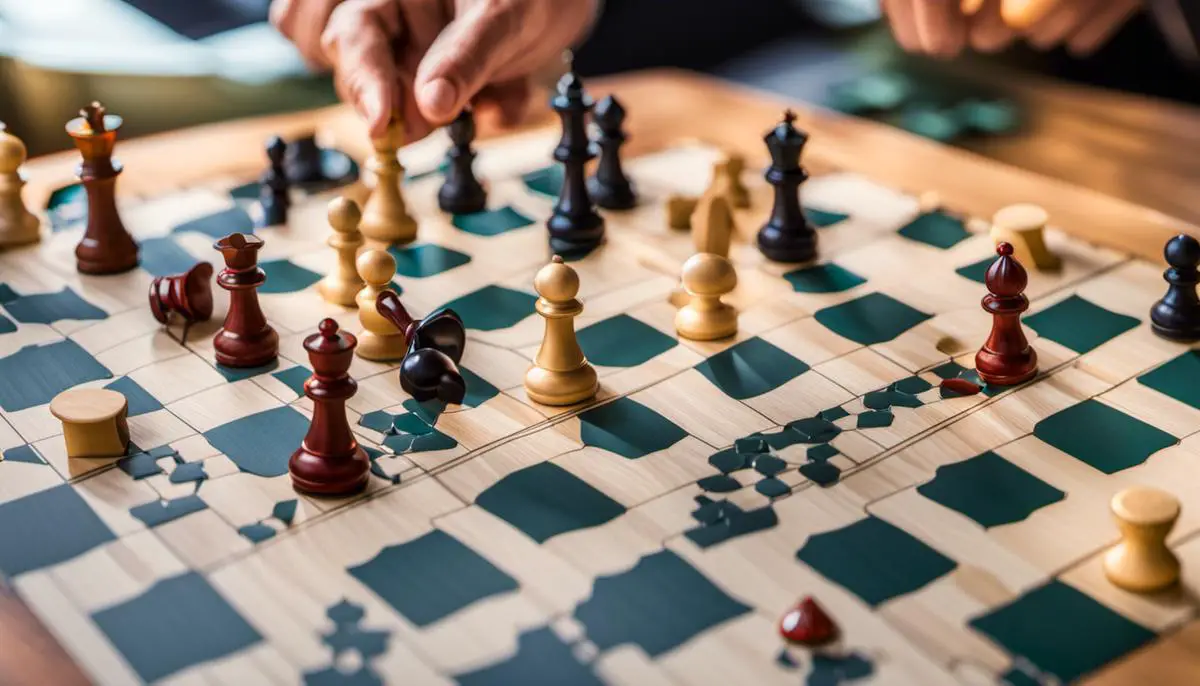
Comparative Study of Petteia with Other Similar Ancient Board Games
Analyzing Petteia and Draughts: An Overview
Both Petteia, which is often regarded as an ancestor of backgammon, and Draughts, also known as Checkers, are ancient dry board games that were developed in unique geographical regions. Although Petteia hails from Greece and Draughts’ gameplay takes place on an 8×8 board with diagonal piece movement, Petteia is markedly different. Played using pessoi, or pebbles, on a square grid, Petteia allows players to move their pieces freely in any direction. In Draughts, pieces are captured by jumping over the opponent’s piece. However, in Petteia, the capture happens via a different mechanism – by flanking or trapping an opponent’s piece between two of your own. Its strategic aspect is further highlighted by the fact that Petteia also allows trapping multiple pieces of the opponent at once, requiring a heightened level of forethought from the player.
Similarities and Differences with Oriental Games
Comparing Petteia with Oriental games like Go draws out fascinating parallels and contrasts. Both games revolve around strategic placement of pieces for capturing opponent’s pieces, but their execution differs. Go is played on a larger grid (19×19), where the goal is to control more than half the board by enclosing larger areas. In contrast, Petteia, generally played on an 8×8 or 12×12 grid, focuses on trapping opponent’s pieces between two of your own.
Go is all about territorial expansion and enclosure, while Petteia leans more towards one’s tactical prowess in trapping and capturing enemy pieces. The beauty of both games, though, is their strategic depth and the high level of concentration required to master them. They both emphasize the importance of forward-thinking and efficient piece management to secure a win.
Gameplay Mechanics and Strategies
In Petteia, the linear movement of the pessoi in four directions allows players to trap opponent pieces between their own. This mechanic highly contrasts games like Draughts, where one must hop over an opponent’s piece to capture it, limiting the movement to diagonally. Hierarchical strategies do not exist in Petteia, unlike in Go, where there’s a distinction between stones (the go term for pieces) of different ranks and files.
Further, the strategic focus on Petteia is heavier on offence, with players actively working to trap and capture their opponent’s pieces. This differs from Go’s balanced approach, where securing territory plays as much importance as capturing stones. Draughts too, with its forced capture rule, adds another layer of defensive strategy which is absent in Petteia.
In conclusion
Petteia’s characteristics make it a very unique game when compared to other ancient board games such as Draughts or Go, by offering a unique mix of gameplay mechanics and strategic demands.
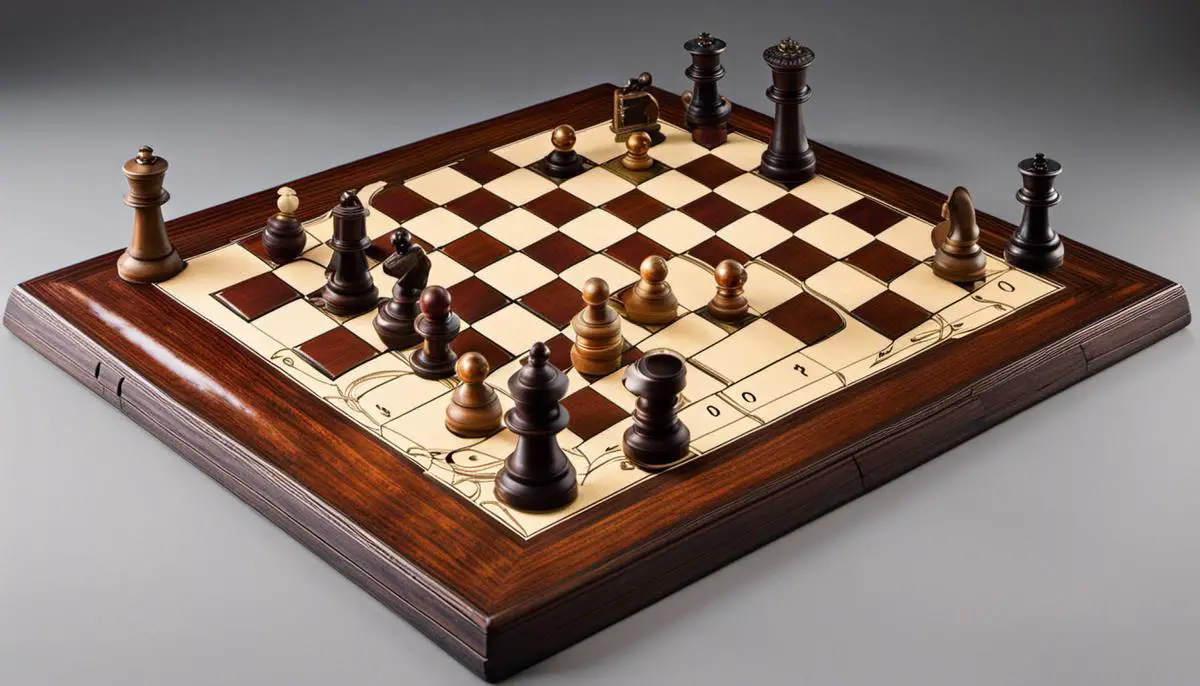
As we have explored, Petteia is more than just a game—it’s a tapestry interwoven with the threads of history, culture, strategy, and human interaction. Its enduring resonance is a testament to its design, rules, and the cerebral challenge it presents to its players. Whether you are just introducing yourself to ancient board games or are a seasoned player, understanding Petteia’s complexity and variability can greatly enrich your gaming experience, sharpen your strategic thinking, and foster a deeper appreciation for the art of game design. By drawing parallels and observing discrepancies between Petteia and other similar games, we gain a broader perspective on gaming traditions that span cultures and eras, reminding us that regardless of time and place, the desire to play, to think, to challenge, and to triumph is a universal facet of the human experience.
